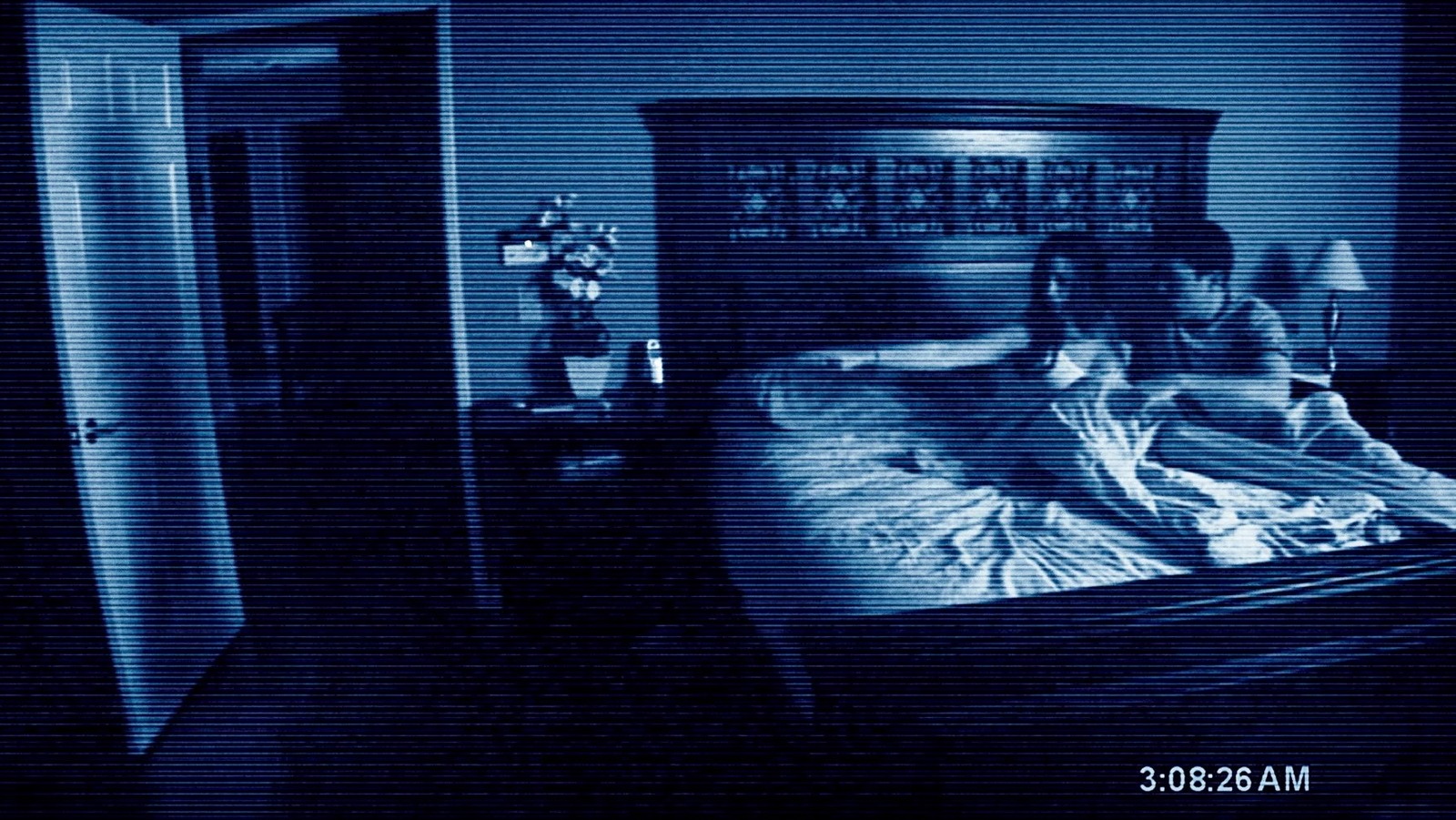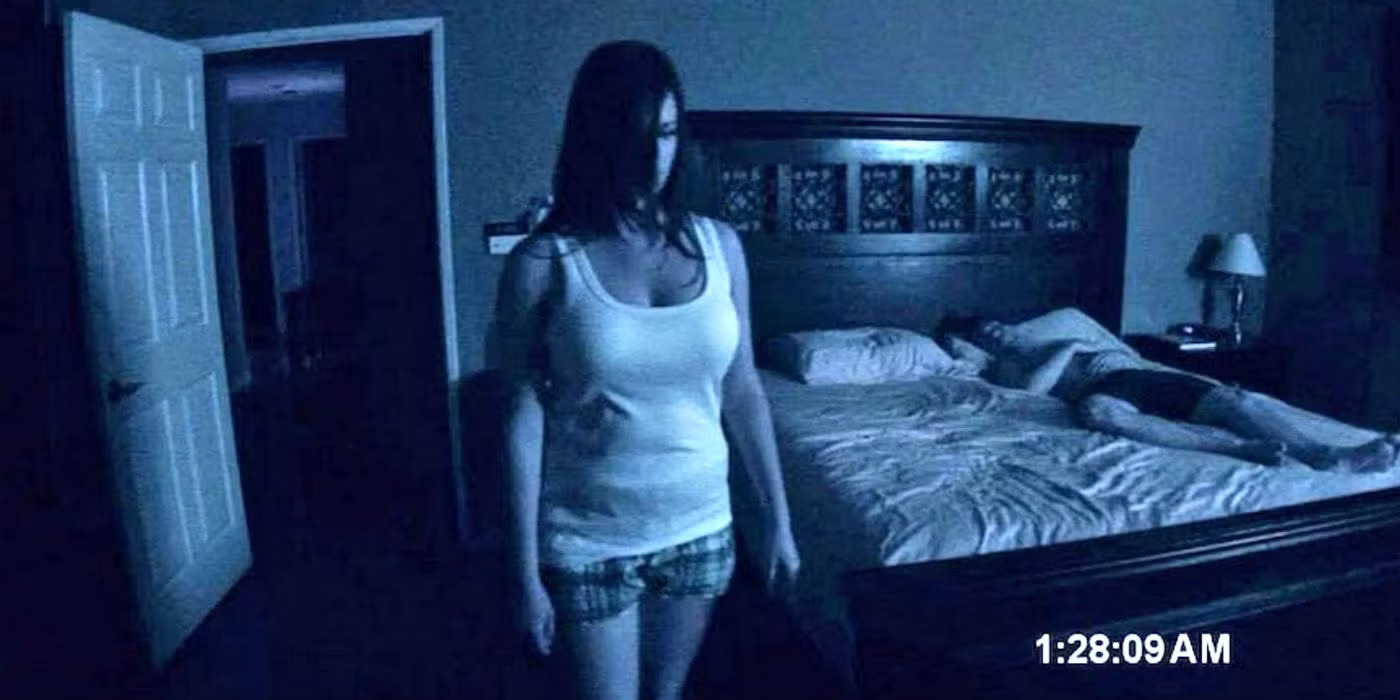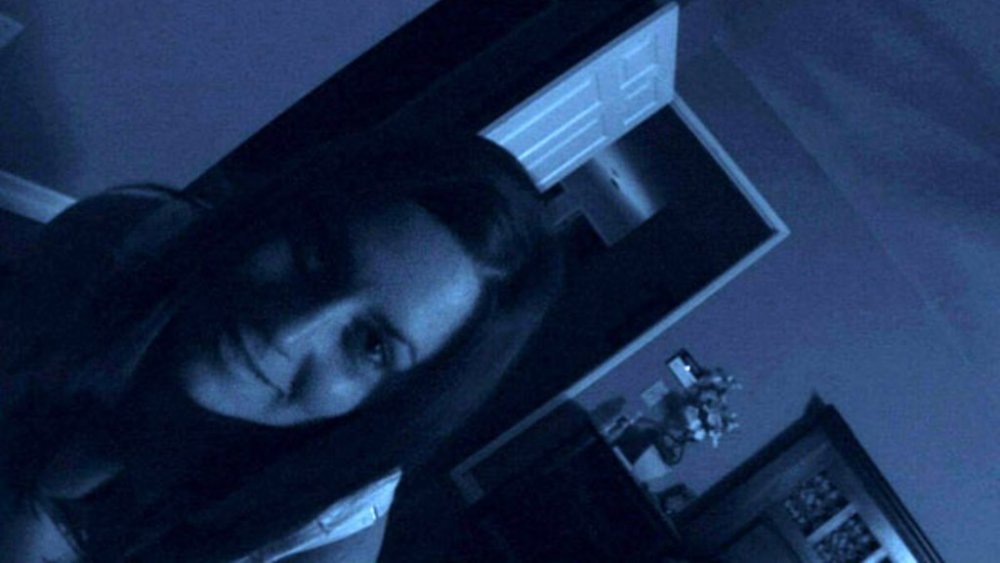Oren Peli’s Paranormal Activity wasn’t just a surprise success—it was a seismic shift in horror filmmaking. With no prior directing experience and a shoestring budget, Peli took a simple haunted house concept and turned it into a box office phenomenon.
Shot using home equipment and featuring a largely improvised script, the film relied heavily on atmosphere, subtle scares, and a documentary-style aesthetic. Its stripped-down realism became its greatest asset, making it one of the most genuinely unsettling horror films of its time. What’s more, it set the standard for the found-footage genre, eventually spawning a massive franchise.
While the theatrical ending of Paranormal Activity became iconic, it wasn’t the original plan. Peli had initially envisioned a much darker conclusion—one that would have drastically changed the film’s tone and character trajectory. In this version, Katie, possessed by the demonic force, returns to the bedroom after killing Micah and enters a catatonic state, pacing for two days.
A friend stops by to check on them but flees when confronted with the terrifying scene. When the police arrive, they find Katie still holding a knife. Confused and alarmed by her behavior—and after a door slams shut unexpectedly—they shoot and kill her. The camera continues to record, capturing the haunting silence before cutting to black.
After Paramount acquired the film, Steven Spielberg viewed the cut and reportedly suggested a different ending. Though he saw potential in Peli’s version, Spielberg felt it lacked broad appeal. The studio gave Peli an additional $4,000 to shoot a new ending—one that emphasized suspense, spectacle, and the potential for sequels.
Though Peli still preferred his original version, he acknowledged that the theatrical ending was more widely accepted by test audiences and played a major role in the film’s commercial success. The revised ending, in which Katie hurls Micah’s body at the camera and lunges at the viewer before disappearing, was chosen for its shock factor and cinematic impact.

Three Endings, Three Tones: Exploring Paranormal Activity’s Bold Narrative Experiments in Horror
What makes Paranormal Activity particularly unique in the horror landscape is that it has not one, but three distinct endings. Alongside the original and theatrical versions, a third alternate ending was included in the film’s home media release. In this grim finale, Katie silently walks into the bedroom and slits her own throat on camera.
There’s no demonic roar, no dialogue—just a bleak, abrupt ending that emphasizes the hopelessness of the situation. Each ending offers a different tone: the theatrical is jump-scare driven and sequel-friendly, the original is slow-burn and tragic, and the alternate cut is nihilistic and hauntingly final.
The “best” ending largely depends on what the viewer seeks from the film. The theatrical version is designed to terrify and thrill. It’s perfect for audiences looking for a classic horror climax and plays well in crowded theaters. However, it sacrifices some of the realism that made the rest of the film so chilling.
The original ending, by contrast, sticks with the documentary tone and avoids over-the-top theatrics. It’s deeply unsettling in its realism, portraying Katie not as a monster but as a victim of possession and misunderstanding. The alternate cut—featuring Katie’s suicide—is perhaps the most horrifying in its simplicity. It provides no resolution or hope, just cold finality.
Paranormal Activity’s experimentation with multiple conclusions didn’t end with the first film. As the series progressed, the use of alternate endings and cut scenes became a recurring theme.
Paranormal Activity 2, a prequel to the original, had its own set of alternate scenes that revealed even more disturbing versions of events, like more graphic depictions of Kristi’s death. These edits, while not used in the final cut, showed how the filmmakers continued exploring different emotional and narrative tones throughout production.

Exploring Paranormal Activity’s Mythology Through Deleted Scenes and Alternate Ending Variations
While Paranormal Activity 3 didn’t officially include alternate endings, it featured deleted scenes that hinted at deeper mythology. One such scene showed Grandma Lois performing rituals with the children, expanding on the cult’s role in the story. Though these scenes were eventually cut for pacing, they provided valuable insight into the demon Toby and the coven’s involvement—elements that would become increasingly important in later films.
Paranormal Activity 4 continued the trend with a more definitive alternate ending where the protagonist, Alex, is violently killed on screen. This version contrasts with the theatrical ending, where she simply disappears. While the alternate version offered more closure, it also removed the ambiguity that had become a signature of the franchise. Similarly, The Ghost Dimension had cut scenes that expanded on Toby’s backstory and the cult’s long-term plans. These choices reveal the series’ continued balancing act between mystery, lore, and audience accessibility.
What started as a low-budget experiment eventually evolved into a franchise known for its willingness to take risks—even if many of those risks never made it to the final cut. The franchise’s use of alternate endings became more than just a creative flourish; it became part of its identity. These multiple outcomes allowed for experimentation with mood, message, and mythology, providing fans with different ways to interpret each story.
Ultimately, Paranormal Activity stands out not just for how it scared audiences, but for how it embraced storytelling flexibility. Whether it’s the sudden, theatrical scare, the quiet dread of the original ending, or the brutal finality of Katie’s suicide, each version leaves a different emotional imprint. The choice to film multiple endings speaks to the creative ambition behind the film—and the franchise’s enduring ability to both terrify and surprise.



